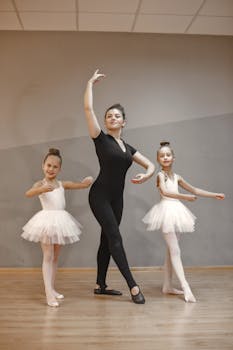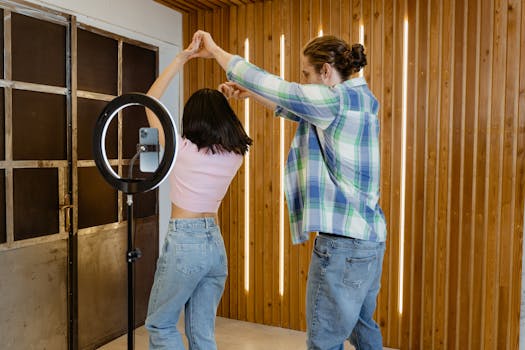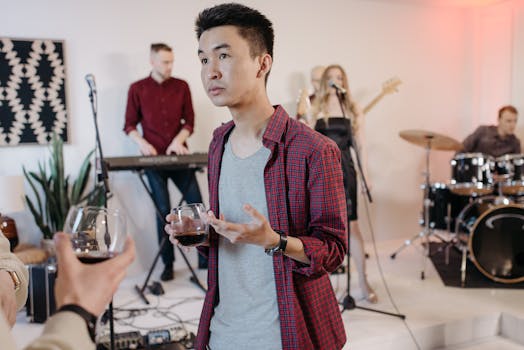Social media has significantly impacted various aspects of our lives, including art forms like dance. From viral challenges to professional showcases, platforms like Instagram, TikTok, and YouTube have transformed how dancers engage with audiences and each other.
This article explores the myriad ways social media has shaped the dance community, both positively and negatively. As dancers share their work online, they create opportunities for collaboration, education, and exposure. Yet, challenges such as misinformation and performance anxiety also emerge.
Whether you are a dancer, an instructor, or a fan, understanding social media’s influence on dance is essential for navigating this dynamic landscape. Let’s delve into the relationship between dance and social media.
The Rise of Dance Challenges
Dance challenges have surged in popularity due to platforms like TikTok. These short, catchy challenges invite users to replicate choreography, making dance accessible and fun for all ages.
Many viral dance challenges synthesize various dance styles, blending traditional and contemporary moves. This innovative fusion showcases the diversity within the dance community, encouraging participation from a broad audience.
Through hashtags and trends, dancers can track the popularity of different challenges. As some trends gain momentum, they can influence the dance styles being taught in studios across the country.
Moreover, participation can lead to performers gaining significant visibility. Dancers can showcase their talent and creativity, leading to potential opportunities in the industry.
Ultimately, dance challenges foster a sense of community. Participants connect with one another through shared experiences, building friendships and support networks online.
Educational Opportunities Through Social Media
Social media serves as a valuable educational tool for dancers at every level. Numerous platforms host tutorials, live streams, and workshops that make learning accessible around the clock.
Experienced dancers and professionals often share their insights, teaching various styles and techniques. This openness creates a wealth of resources for aspiring dancers looking to refine their skills.
Additionally, many influencers offer free content, democratizing dance education. As a result, dancers from various backgrounds gain access to training previously limited to studio settings.
Furthermore, social media fosters discussion around dance theory and movement analysis. Dancers share essays, videos, and critiques, helping deepen the understanding of dance as an art form.
By participating in these discussions, dancers not only enhance their knowledge but also cultivate a critical eye. This growth contributes to their overall development as artists.
Networking and Collaboration
Social media has made it easier than ever for dancers to connect globally. Through hashtags and platforms, collaboration opportunities can arise between dancers of diverse backgrounds and styles.
Networking online enables dancers to collaborate on projects, participate in group performances, and share resources. This sense of community helps foster creative partnerships that may not have happened otherwise.
Additionally, dancers can easily find mentors and peers who inspire them. Online connections can turn into invaluable relationships that nurture personal and professional growth.
Showcasing collaborative projects online can enhance visibility for all involved. Followers appreciate seeing innovative partnerships, which can lead to increased opportunities for all dancers featured.
Thus, the networked nature of social media amplifies individual achievements. Every dancer’s success story can serve as inspiration for others within the community.
Artists Leveraging Their Brand
Social media platforms allow dancers to establish personal brands. By curating content that reflects their artistry and personality, dancers create profiles that attract followers and opportunities.
Building a personal brand can lead to collaborations with brands and greater visibility within the industry. Dancers can draw attention to their work, potentially leading to performances, partnerships, or sponsorships.
Dancers also use social media to market themselves for workshops, classes, and performances. Well-maintained profiles can serve as effective portfolios, showcasing talent and dedication.
However, branding comes with pressure. Dancers may feel compelled to present a particular image or style that aligns with audience expectations, sometimes leading to inauthentic expressions.
The Impact of Trends and Fads
Trends on social media often affect how dance is perceived and engaged with. Dancers may adopt popular moves from viral videos, leading to the rapid spread of particular styles.
While trends can generate excitement, they may also overshadow lesser-known styles or artists. Dancers must navigate the fine line between embracing trends and preserving their unique artistry.
Additionally, the speed at which trends evolve can be challenging. Keeping pace with the latest challenges and styles can lead to stress, especially for those heavily invested in social media.
However, trends can introduce audiences to new forms of dance. As users engage with diverse styles, they may develop an appreciation for different dance forms outside their experience.
Misinformation and Pressure in the Dance Community
Alongside its benefits, social media can perpetuate misinformation within the dance community. Videos depicting improper techniques can mislead aspiring dancers, potentially resulting in injuries.
Furthermore, the pressure to perform and present polished images can lead to anxiety. Dancers may spend excessive time perfecting their appearance rather than focusing on artistic expression.
This constant comparison to others can affect a dancer’s self-esteem. With curated feeds filled with seemingly perfect performances, feelings of inadequacy may surface.
Moreover, the expectation to engage tirelessly with followers can be taxing. Dancers juggling their creative pursuits with social media management may find it overwhelming.
Conclusion
In summary, social media’s impact on dance is multifaceted, offering both opportunities and challenges. Through accessible education, global networking, and avenues for personal branding, dancers thrive creatively.
However, the pressure to conform to trends and manage online personas can lead to stress and misinformation. Awareness and advocacy are key in creating a balanced approach, ensuring a healthy community exists.
Ultimately, social media continues to shape the future of dance. Its ability to connect and inspire transcends physical boundaries, making dance more inclusive and engaging than ever before.


